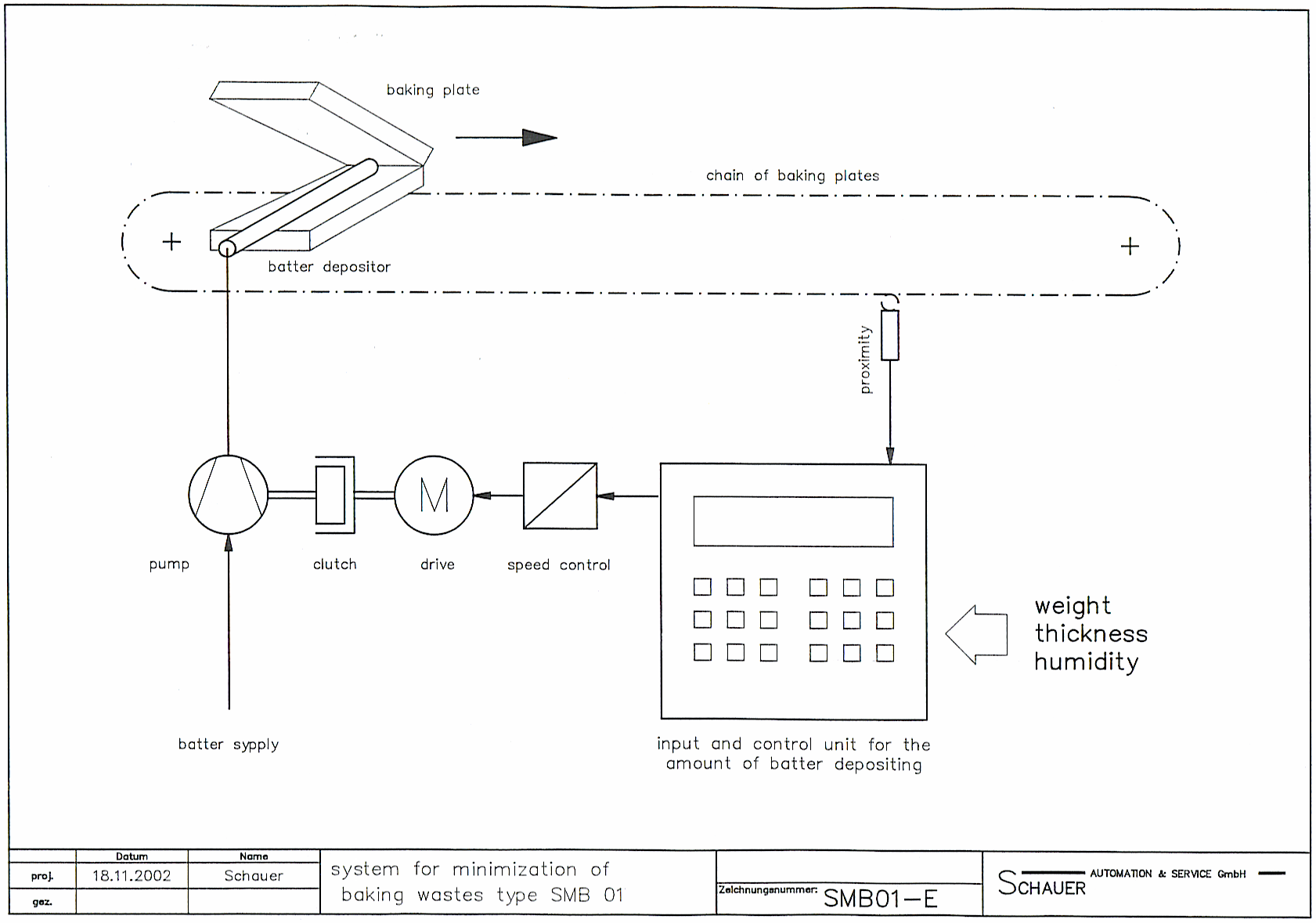INTELLIGENT BATTER PUMP SYSTEM, type SMB 301 for wafer ovens
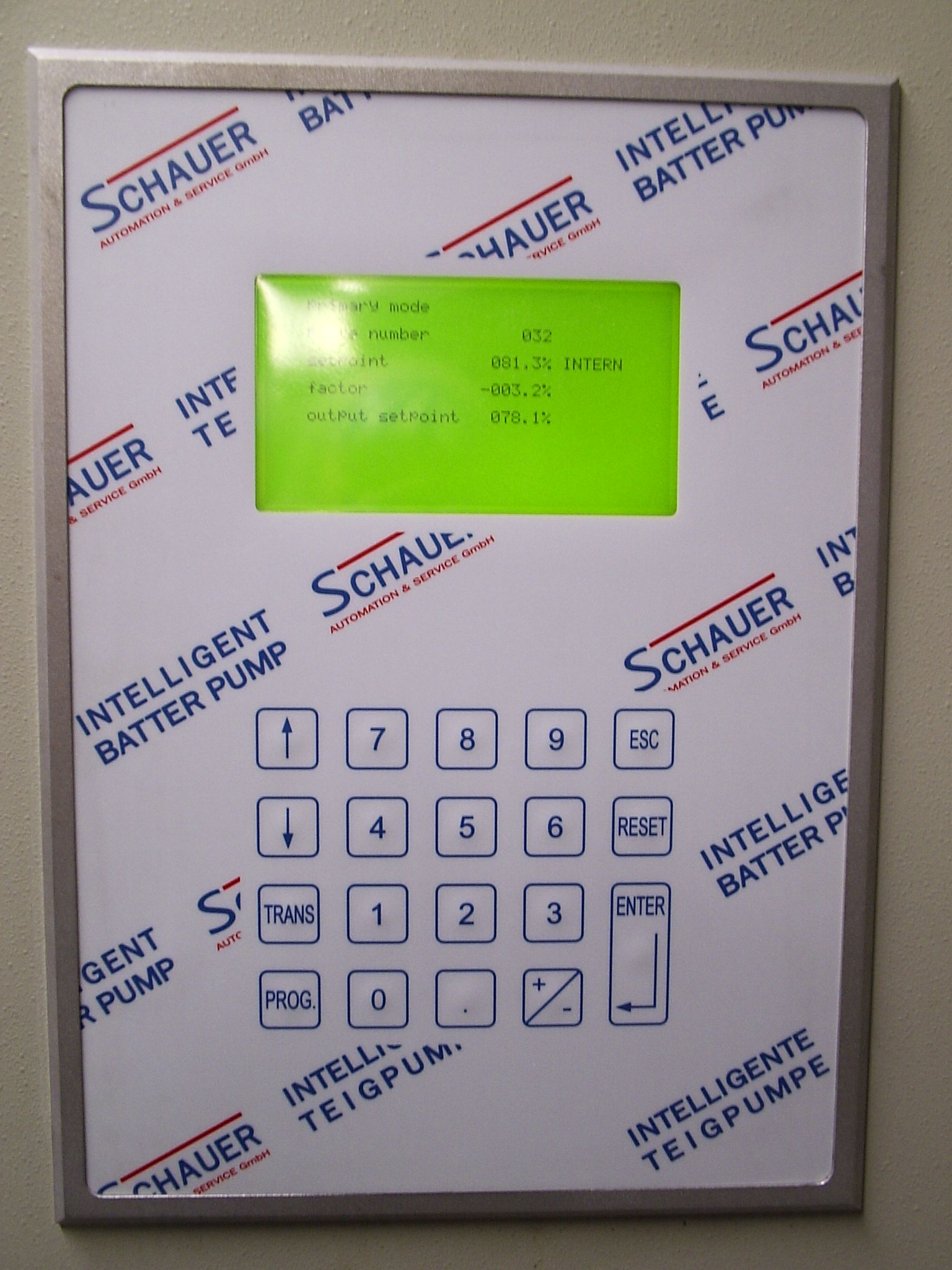
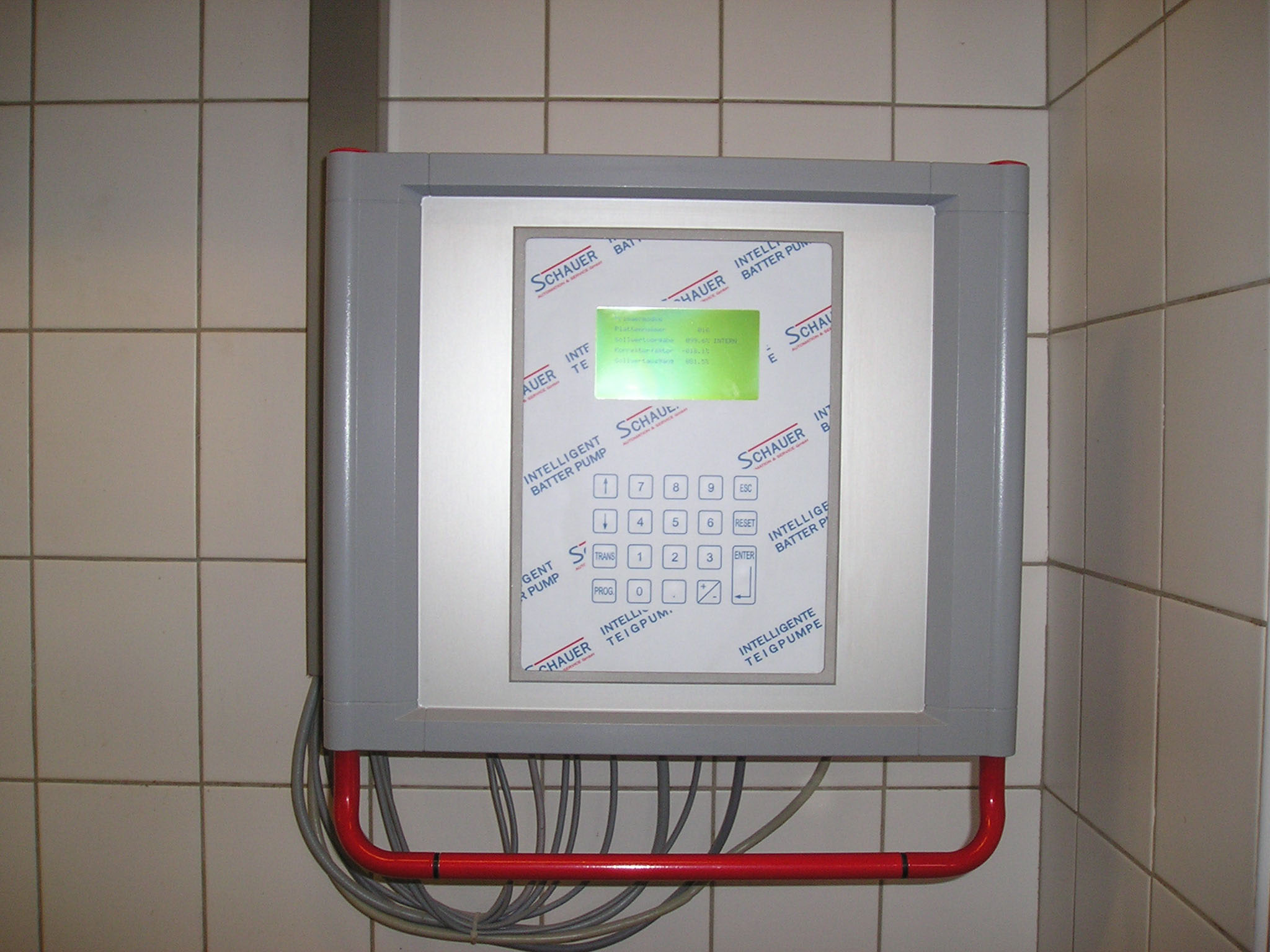
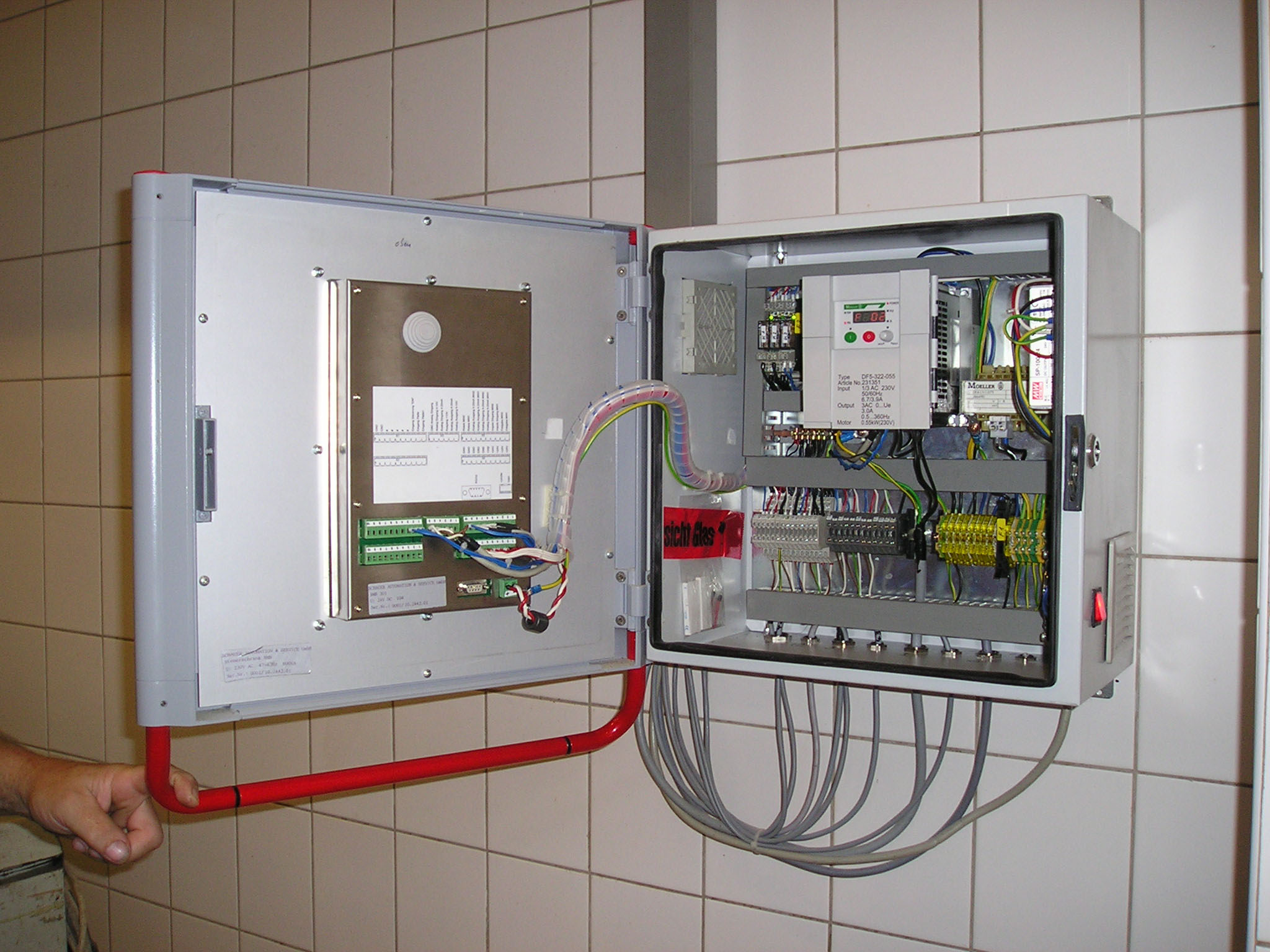
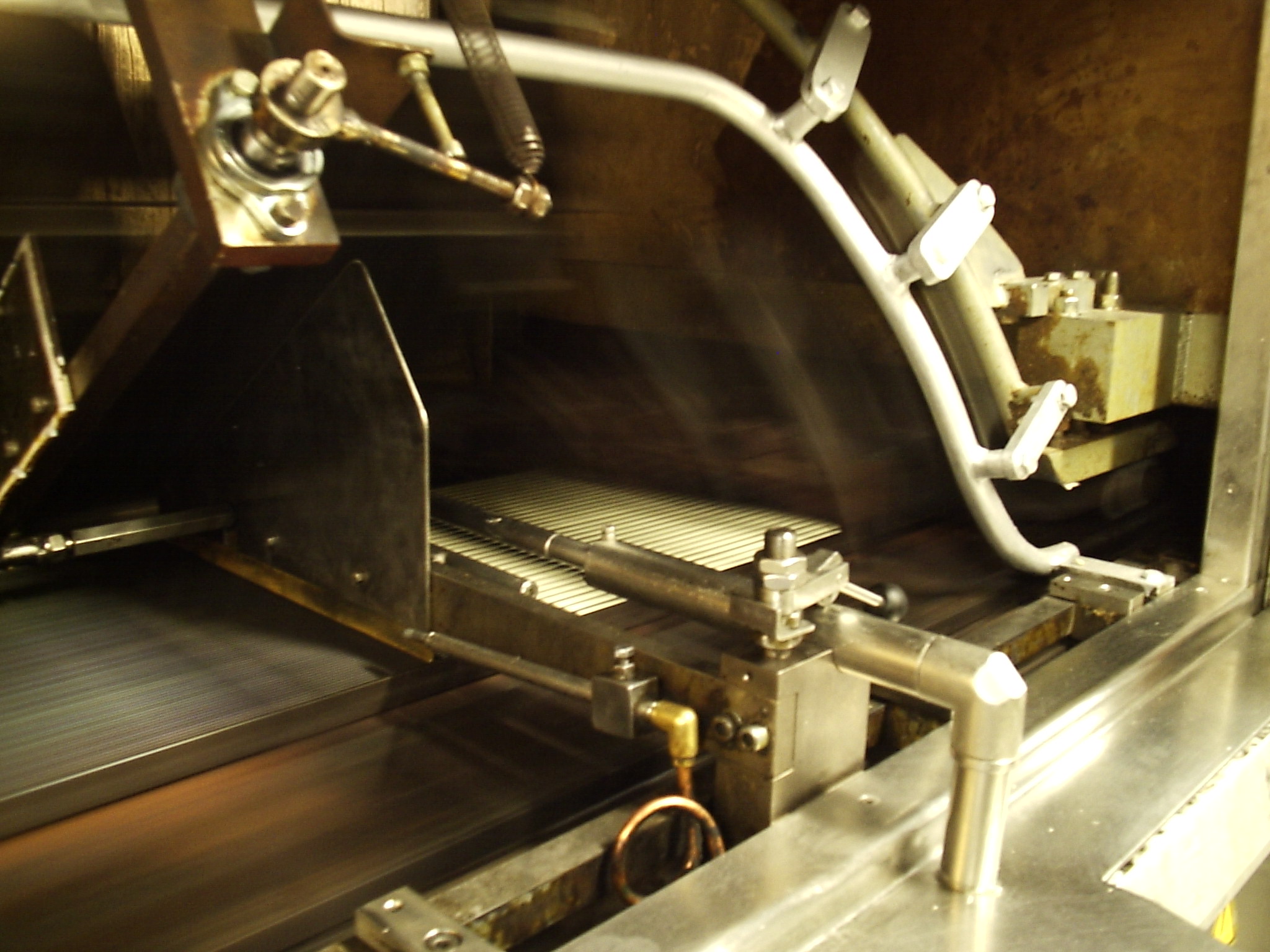
1. Systemdescription:
1.1 Actual situation:
Actual batter pump systems are dosing an identical amount of batter on each pair of baking plates of a wafer oven.
In praxis the complete set of baking plates of a wafer oven does have tolerances regarding "baking volume" and
"steaming out" conditions. These tolerances are related to setup, wear, eveness of baking surface, etc...
In order to bake complete and "full" wafers, these are important parameters for wafer quality and automised production
, the to be dosed amount of batter has to match the baking plate with biggest volume and/or the plate with the highest
"steaming out" condition.
As a result of this the majority of the other baking plates of the oven receive too much batter.
These overdosed amounts are transported out of the baking plates during the baking process and are remaining
as "baking drops", more or less unbaked and in different sizes at the sides of the wafer or the baking plates
Beside the fact of raw material (batter) losses, big an wet baking drops are creating problems at the wafer take off
and transfer stations.
1.2 The idea:
Plate optimised depositing of batter as per our system
I N T E L L I G E N T B A T T E R P U M P
This system allows to optimise the deposit of the individually required amount of batter on each baking plate of a wafer oven.
As a result of this considerable batter savings are achieveable.
The required volumes are automatically calculated by the system under consideration of the product parameter such as engraving,
lenght, wide, thickness, etc....
It also supplies a manual operation parameter to decrease or increase the volumes on demand.
1.3 Suitable for, installation efforts:
The device can be installed quite easily with very limited efforts on most types on wafer ovens
The duration for the installation is approximately one to two days.
2. Economical valuation
2.1 Batter saving potential
At analysing existing wafer products under consideration of the the engraving data the following
potential for batter saving in % per 0,1 mm stat. thickness tolerance can be calculated as follows
- hollow wafer, total thickness 2,1 mm = 4,76 %
- flat wafer, total thickness 2,2 mm = 3,59 %
- flat wafer, total thickness 3,0 mm = 5,34 %
- flat wafer, total thickness 4,0 mm = 4,28 %
- flat wafer, total thickness 5,3 mm = 3,22 %
2.2 Saving of raw materials per year
Saving of raw materials = batter saving (4,76/3,59/5,34/4,28/3,22 % per 0,1 mm stat. thickness tolerance ) x raw materials costs per year.
2.3 ROI (return of investment in month):
ROI = project price / saving of raw materials per year * 12
Based on our experience and our knowledge about the production situation of our clients the ROI for this
modification should be achieved within 8 and 16 months, depending on oven type (number of baking plates, type of engraving) and
production hours (one, two or three shift production).
From our point of view the above mentioned period will be reduced considerably by the additional effects as described in point 3.
3. Quality, productivity
3.1 more even structure, mechanical more stabile wafers - LESS BREAK in transport, creaming etc.:
More even baking process is achieved by plate optimised batter depositing. As a result of this the structure of the wafers becomes more even and the wafers receive more mechanical stability.
This leads to less breakages at transport, creaming and other handling sections of the wafers and increases
considerably the productivity the wafer book production.
3.2 Easier wafer take off due to smaller and more dry baking waste drops- LESS BREAKAGES AND WASTE:
Related to plate optimised depositing the baking waste drops on the irons are getting smaller and more dry.
This makes it easier to loosen the wafers from the baking irons and leads to less broken wafers at the take off and wafer control device.
Also smaller and more dry baking waste drops can be removed easier from the wafers as well as from the baking irons. As a result of this less
baking wastes are falling into following irons and are "double baked". This leads to better wafer quality and less wafer losses.
3.3 Wear, uneveness of baking surfaces, differences in size (length and wide)
Plate optimised depositing allows effective and direct action against
- sealness problems due to wear or damages
- problems due to uneven baking surfaces
- problems due to site differences in length and wide caused by repairs
on particular baking plates WITHOUT the negative influence of "overdosing" to the remaining "good" baking platets.
4 .References
A reference installation with the possibility to be visited upon request is in operation at a client in Germany since August 2003.
We also heave the permission to name our following clients
Messrs. GÖTEBORGS KEX AB, Strandgatan, 44282 Kungälv, Sweden,
Messrs. KRAFT FOODS BELGIUM N.V., Montezumalaan 1, 2200 Herentals,
as satisfied users of several of our systems.
5. Drawing
Here you will find a system drawing of the SMB 301
